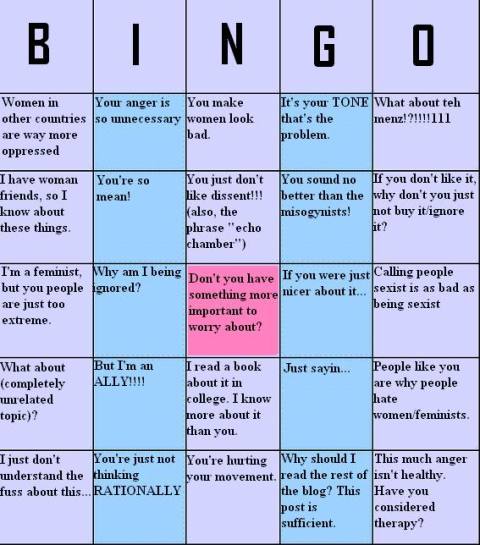UPDATE: All of the EFF Fellows appear to be … fellows.
EFF Advisory Board members as of today per EFF website:
Andrew Bridges is a partner in the San Francisco office of Winston & Strawn LLP where he litigates and counsels clients on complex and cutting-edge disputes and risks pertaining to new technologies and the Internet, particularly in the fields of copyright, trademark, trade secret, consumer protection, unfair competition, and media law.
Michael Froomkin is a professor of law at University of Miami School of Law and an expert in Internet law and constitutional law. He maintains a personal site at http://www.discourse.net, and is an editor of http://www.icannwatch.org/.
Michael Geist is a law professor at the University of Ottawa where he holds the Canada Research Chair in Internet and E-commerce Law. He is active on copyright, privacy, and Internet issues and was a founder of the Canadian Internet Policy and Public Interest Clinic (cippic.ca). He blogs at michaelgeist.ca.
Paul Grewal is a partner at Day Casebeer and an expert in high tech law. He is admitted to practice before various federal courts, as well as before the US Patent and Trademark Office.
Jim Griffin is the CEO of Cherry Lane Digital, a company dedicated to the future of music and entertainment delivery. Griffin also founded the Pho list, where thousands of members meet to discuss digital media.
David Hayes is a partner in the Intellectual Property Group at Fenwick & West LLP and is an expert on copyright law and digital media. He has served as counsel for a number of precedent-setting software copyright infringement cases, including Apple v. Microsoft and the Napster case.
Bernt Hugenholz
Mitch Kapor is one of EFF’s founders as well as the founder of the Lotus Development Corporation. He is also founder and chair of the Open Source Applications Foundation (OSAF). He keeps a website at http://www.kapor.com/.
Mark Lemley is a professor at Stanford Law School and is director of the Stanford Center for Law, Science and Technology. He is the author of several books and has testified before Congress and the FTC on patent, antitrust, and constitutional law matters. He is of counsel at Durie Tangri Lemley Roberts & Kent.
Eben Moglen is Professor of Law at Columbia University, and pro bono General Counsel of the Free Software Foundation. He was a law clerk to Justice Thurgood Marshall of the US Supreme Court, holds a PhD in legal history, and is the author of many articles and essays about the free software and free culture movements.
Tom Moore has his own small firm, The Moore Law Group, in Palo Alto, California, from which he represents technology-oriented companies and individuals in general commercial, intellectual property and boardroom disputes. Tom has collaborated with the EFF on various projects since January 2000, including defending Andrew Bunner’s right to publish DVD decryption software on his website, defending the rights of online journalists to protect their confidential sources and defending against an attempt by Visa International to monopolize use of the word”visa”in domain names.
Deirdre Mulligan is an Assistant Professor at the UC Berkeley School of Information. Professor Mulligan’s current research agenda focuses on information privacy and security. She was previously a clinical professor of law and the director of the Samuelson Law, Technology & Public Policy Clinic.
Craig Newmark Craig Newmark is the founder of craigslist.org, a site where people can help each other with everyday needs including housing and jobs. He’s also working with a wide range of groups using the Net to help each other out, like Donorschoose.org, the Iraq & Afghanistan Veterans of America, Kiva.org and LendforPeace.org (microfinance), and Consumer Reports. Craig is also actively engaged with government workers on multiple levels to use the Net for superior public service, and with Sunlight Foundation for government accountability and transparency. He’s not as funny as he thinks he is, but sometimes can’t help himself.
Michael Page is a partner at Durie Tangri Page Lemley Roberts & Kent LLP. Michael specializes in cutting-edge copyright litigation, representing such clients as Grokster, Troy Augusto, Shepard Fairey, 321 Studios, and others.
Bruce Schneier is a security technologist and author of eight books — including Beyond Fear and Secrets and Lies — and hundreds of articles and academic papers. His influential newsletter “Crypto-Gram,” and his blog “Schneier on Security,” are read by over 250,000 people. Schneier is the Chief Security Technology Officer of BT.
Barbara Simons is on the Board of Advisors of the U.S. Election Assistance Commission. She was a member of the workshop, convened at the request of President Clinton, that produced a report critical of Internet Voting in 2001. She also co-authored the report that led to the cancellation of DoD’s Internet voting project (SERVE) because of security concerns. Simons, a former ACM President, co-chaired the ACM study of statewide databases of registered voters, and she co-authored the League of Women Voters report on election auditing. She is co-authoring a book on voting machines with Doug Jones. Simons is retired from IBM Research.
Daniel J. Solove is a professor of law at the George Washington University Law School. He is the author of several books, including Understanding Privacy (Harvard 2008), The Future of Reputation: Gossip, Rumor, and Privacy on the Internet (Yale 2007), The Digital Person: Technology and Privacy in the Information Age (NYU 2004), and Information Privacy Law (Aspen 3d ed. 2009) (with Paul M. Schwartz). His work focuses on information privacy law, criminal procedure, national security, law and literature, legal theory, First Amendment, and other topics.
Michael Traynor is a former partner at Cooley Godward, LLP, where he specialized in intellectual property, business and First Amendment litigation. He is also former president of the American Law Institute.
Jim Tyre is an attorney and EFF fellow who has represented free speech interests for more than 30 years. He is a founder of The Censorware Project, which provides public information about censorware products.
Richard R. Wiebe is a San Francisco lawyer with his own public interest practice focusing on free speech, intellectual property, and environmental issues. Rick works regularly with EFF on lawsuits protecting civil liberties in the digitial world, including defending Andrew Bunner’s right to publish DVD decryption software on his website, defending the rights of online journalists to protect their confidential sources, and defending the copyright fair use rights of digital video recorder owners. He has also worked with EFF to expose the weaknesses of electronic voting technology and advocate for a voter-verified paper trail.
Ethan Zuckerman is a senior researcher at the Berkman Center for Internet and Society at Harvard University where he studies technology adaptation in the developing world. He is co-founder of Global Voices, an international citizen media community focused on free speech and media diversity. He blogs at My Heart’s In Accra.
*******************************************
Eight out of ten members of EFF’s Board of Directors are also male.
Continue reading →







 Later this month, the documentary film “
Later this month, the documentary film “




